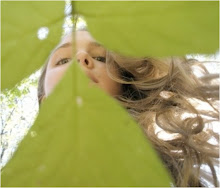The interesting thing about all of these movies is that they portray real artists as what people would describe as the stereotype of an artist; this almost makes it not a stereotype, because real artists were that way. In Lust for Life, Van Gogh was an example of the sad and suicidal artist. Frida Kahlo and Diego Rivera were excellent examples of how students often eclipse their teachers in talent, and the quote by Rivera, "I will not compromise my vision," is repeated by artists all the time. Peggy Guggenheim was a wonderful example of the conceited patron with an inflated love for herself, and when Lee Krasner said she thought she knew every abstract artist in New York, but not Jackson Pollock, this illustrated the stereotype that artists know all the other artists. The movie about Basquiat showed the interviewer asking if Jean was angry as an artist, which shows that the interviewer was entertaining stereotypes about artists himself. The film Why Man Creates was satiric and comical, which supported the stereotype that artists have a different view on the world than others who are not artists.
In general, a lot of the stereotypes that were discussed before viewing these films were exhibited in the movies, which goes to show that maybe these stereotypes are not that far from the truth.
Friday, February 20, 2009
Thursday, February 5, 2009
Artist Cliches and Stereotypes
I'm an artist...but I'm blond. That doesn't exactly fit the stereotype for the tormented artist who wears ripped and colorful clothes, long dark hair constantly in disarray, and lives only for their art and nothing else. Artists always live in New York, in a nice little studio apartment where they can paint or sculpt or write dramatic prose for some obscure literary magazine. Generally, people assume artists aren't well off and have a poor education outside of the arts. If you were an artist, people would expect you to know the names of all the up and coming modern artists that you associate with (of course you associate with artists and only artists), and people would expect you to constantly have diverse and extraordinary ideas. After all, artists are the most creative of individuals, are they not?
Subscribe to:
Comments (Atom)

